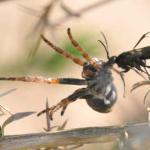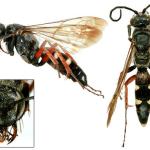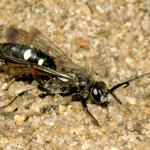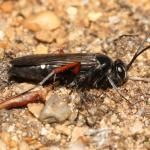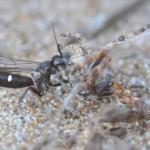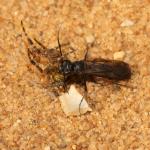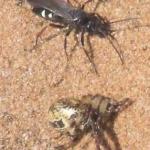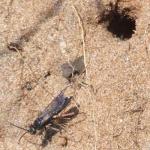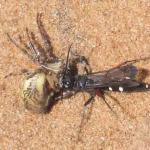A large, robust species with ivory spots on the gaster. Until recently this was the only member of this worldwide genus to be found in Britain, but the recent discovery of Episyron gallicum (Tournier) has complicated matters. Females are readily distinguished by having four comb spines of the fore tarsus (three in gallicum), but males are very similar and require critical examination.
Episyron rufipes is widespread in lowland Britain on any sandy soils. Away from the south-east heaths and coastal systems, inland records are scattered north to Humberside. In Wales, north west England and in Ireland, E. rufipes is mostly confined to the coast.
The species is widely distributed in open sandy habitats across the western Palaearctic, eastwards to central Asia.
This species is not regarded as being scarce or threatened.
Day (1988) is the standard work for identifying British Pompilidae. Wiśniowski (2009) is also useful.
Coastal dunes, landslips and grasslands. Also, inland heaths, gravel pits and gardens on sandy soils.
Univoltine; May to September.
Episyron rufipes is a specialist hunter of orb-web spiders. Araneidae (Araneus) and Metidae (Meta) are the usual prey, with a few records for Lycosidae.
The nest is excavated in loose sand after the prey has been captured. The prey is stored during this process above ground in a nearby plant (Day, 1988).
Both sexes visit flowers for nectar. The wasps are often found on umbellifers.
The nests of E. rufipes are parasitised by the endangered pompilid Evagetes pectinipes (Linnaeus) which is confined to the Deal and Sandwich coastal dunes. The egg of Episyron is consumed by the Evagetes female who puts her own egg in its place before the nest is resealed. E. rufipes is also parasitised by Ceropales maculata (Fabricius).
1998


